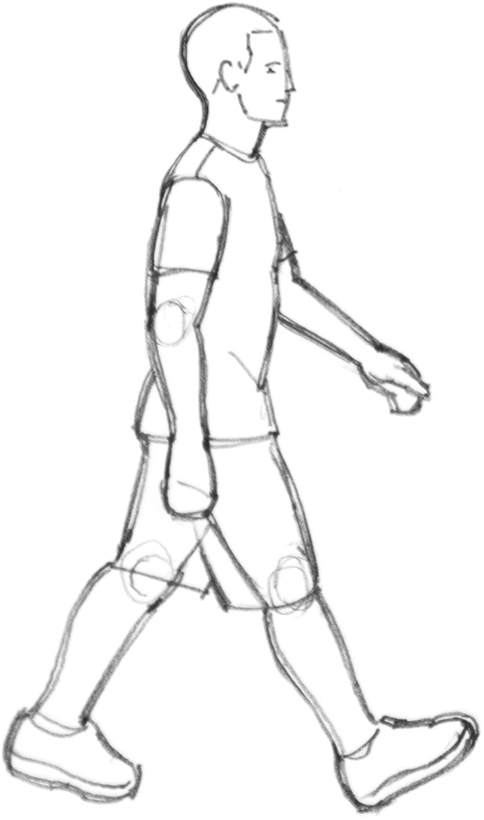
To make a figure appear in action, move the line of balance away from the support base. Walking and running, observed from the side and the front, display how action can add interest to a figure drawing.
Moving the line of balance forward of its stationary position suggests motion. The greater the momentum of the figure, the more the line of balance differs from its stationary position.
Arms and legs swing and bend in rhythm as the weight of the body transfers from one leg to another when it is in motion.



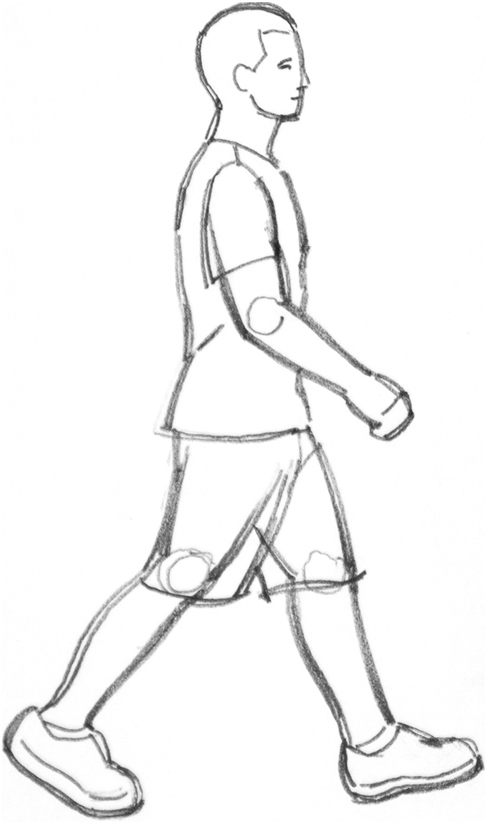
As a figure walks, the line of balance is forward compared to a stationary figure. The forward momentum, along with the fluid movements of the arms and legs, keeps the form in balance. Opposing arms and legs move in unison (e.g., the left arm swings forward as the right leg moves forward). Other characteristics of the walking figure include a central form that is upright with arms and legs that are relatively straight. As the weight transfers back and forth, one foot is always in contact with the pavement.
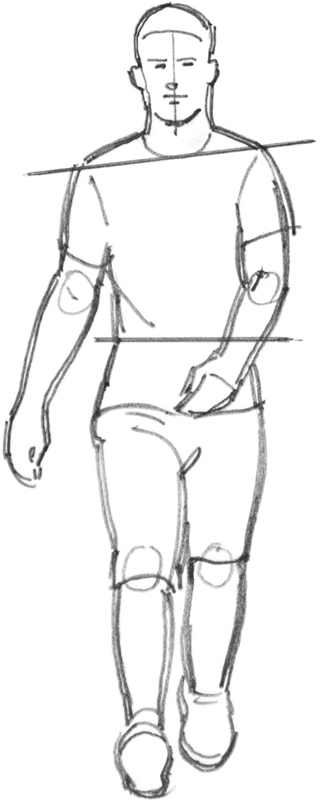
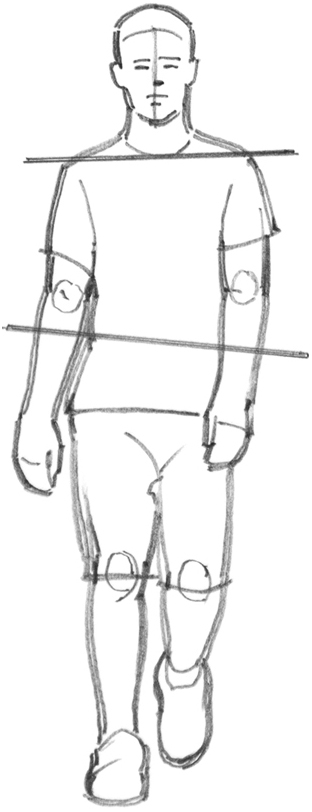
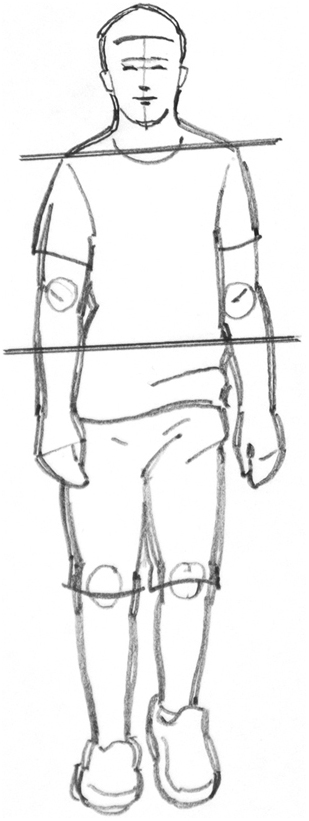

As the figure moves forward, the arms and legs move to pass the weight back and forth and to keep the balance. The hips tilt in response to the changes. The shoulders may appear angled due to the swinging of the arms and the movement of the frame.
When running, the figure has a line of balance that is farther forward than when walking. Momentum and body form keep the figure balanced. Muscles tighten and flex due to the extra strain upon them.
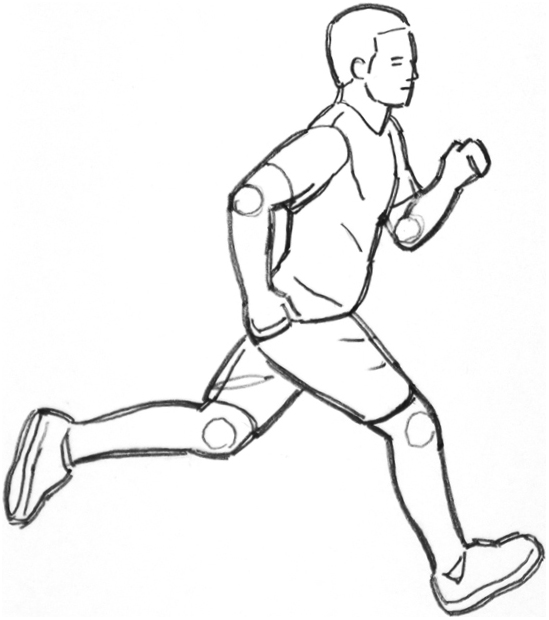
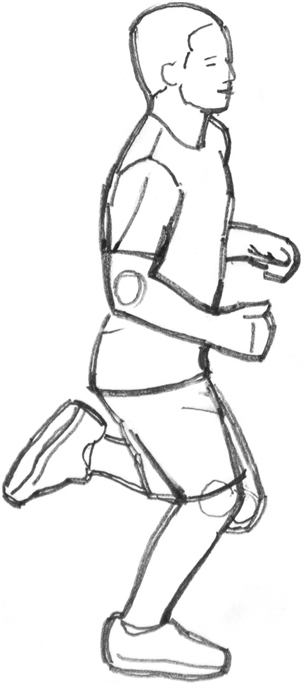
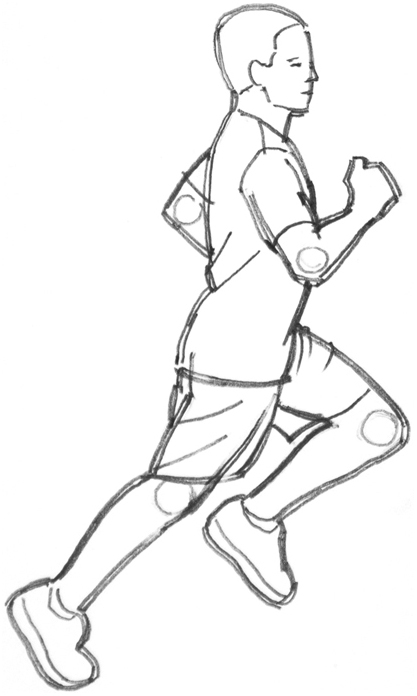

The stance of a running figure is more extreme and exaggerated, with the torso bent forward. Arms and legs are bent more than when walking. As the right leg carries the body’s weight, the left leg bends, rises and comes forward in anticipation of taking the weight and pushing the body forward. During the process of shifting the weight from one leg to the other, both feet may leave contact with the pavement.
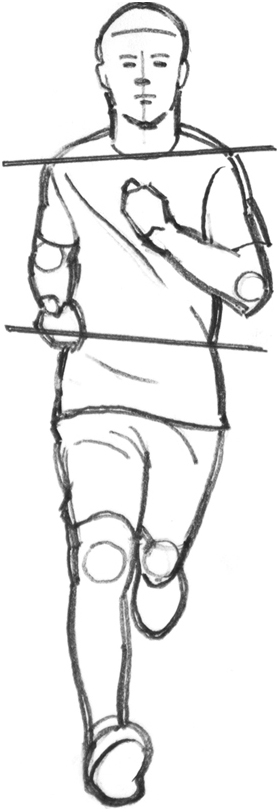
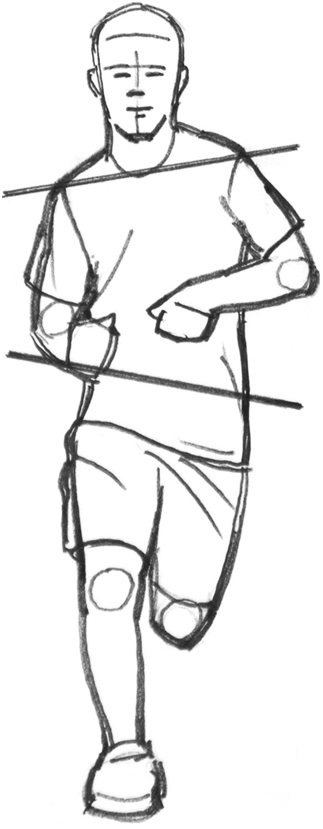

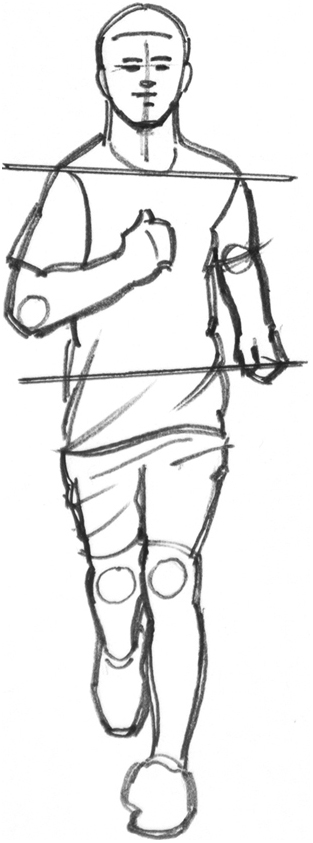
When a figure is running, the angles of the shoulders and hips are more pronounced than those of a walking figure. The weight is shifted and the knee is brought up and forward.